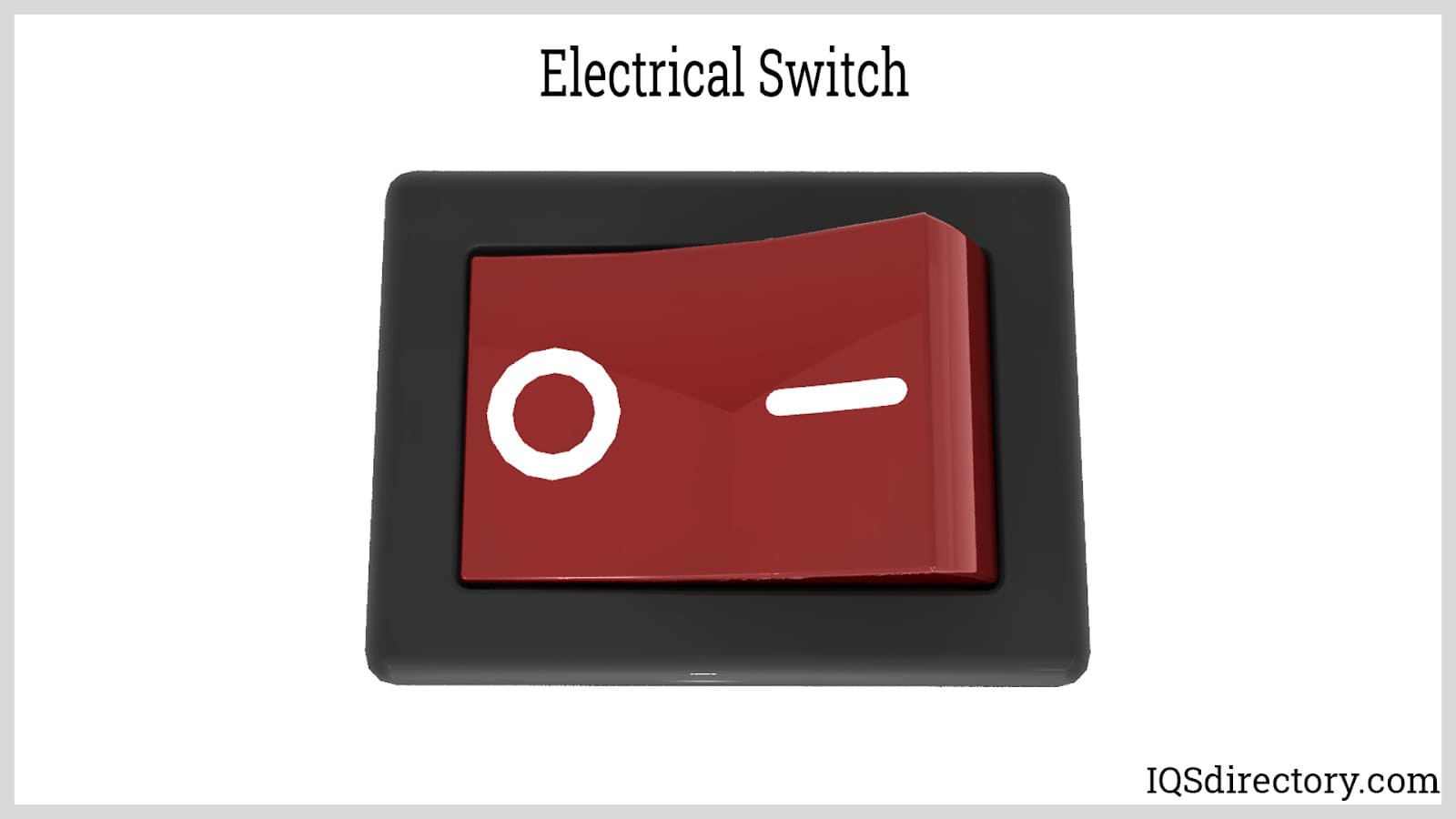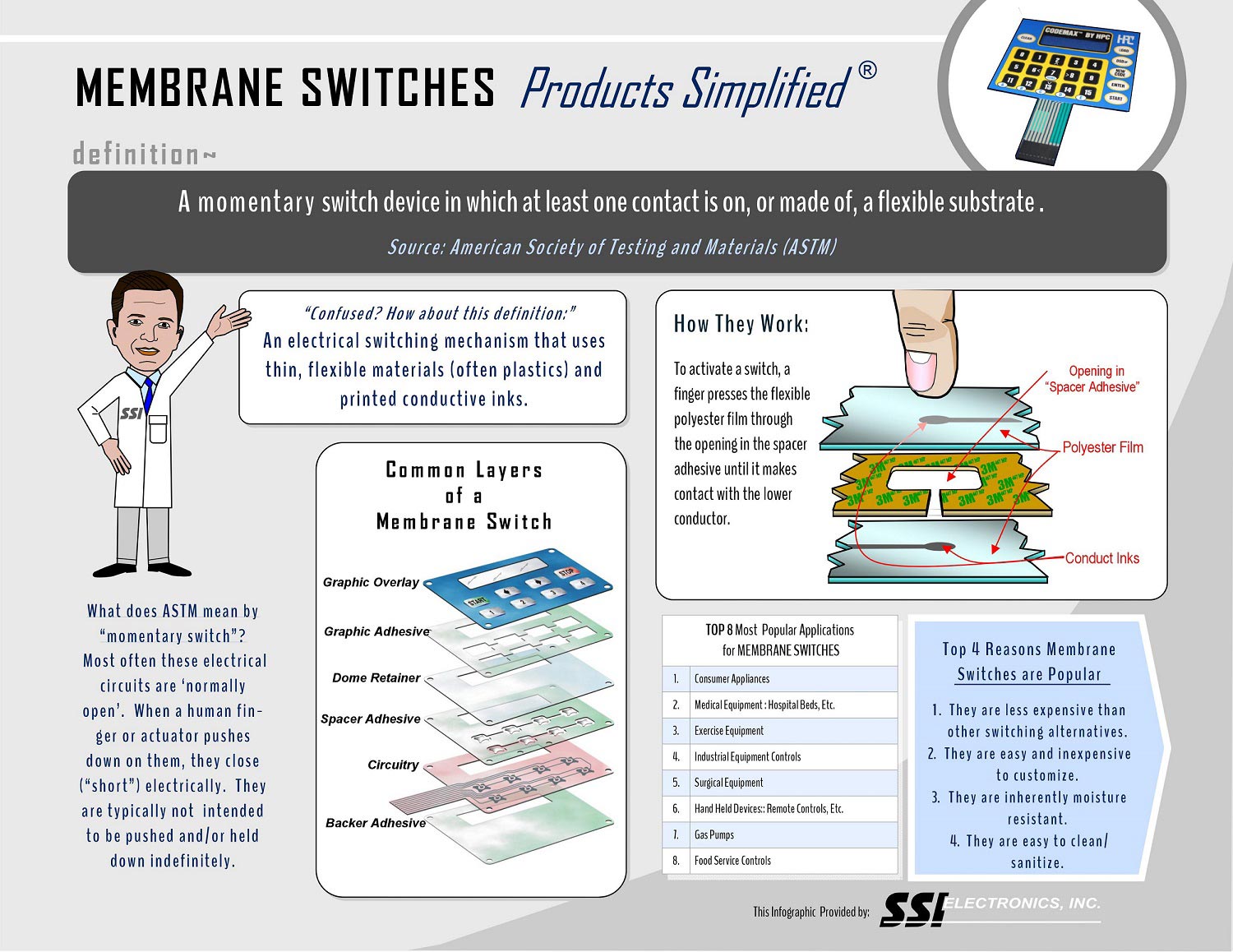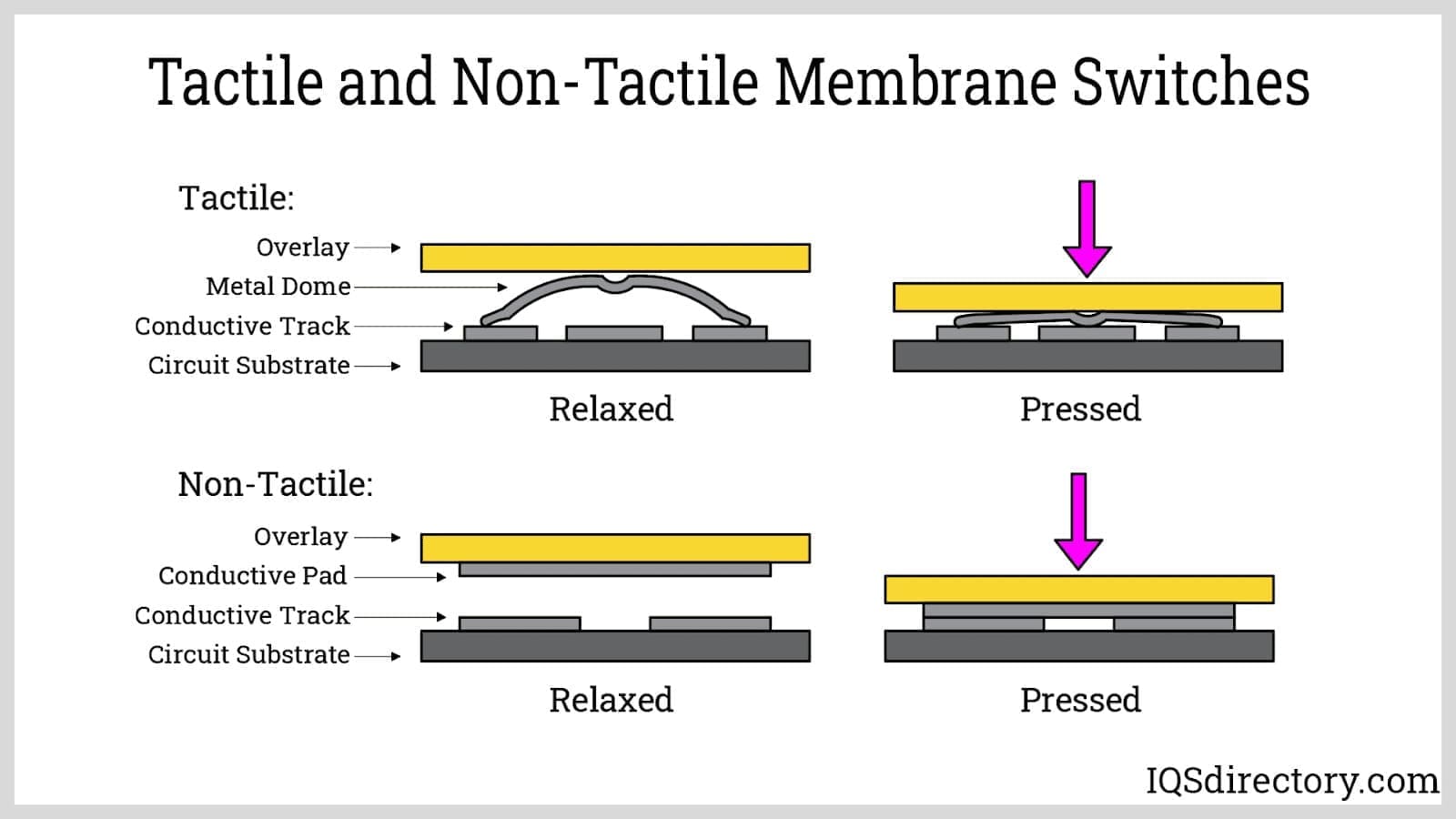The Production Process Behind Membrane Layer Switch: What You Required to Know
The manufacturing procedure behind membrane layer changes combines careful style, material choice, and quality control. It starts with understanding the ins and outs of membrane layer button layout and proceeds with numerous stages, consisting of material options and printing techniques. Each stage plays a necessary role in making sure functionality and toughness. The intricacies of layer building and the strenuous testing requirements might disclose understandings that are not instantly apparent. What lies past these fundamental elements?
Comprehending Membrane Layer Switch Over Layout
Membrane layer buttons might show up simple at first glance, their design involves elaborate considerations that assure functionality and sturdiness. The style process begins with a complete understanding of customer needs, consisting of the user interface's desired application and ecological variables. Comfort designs is a crucial element, as the format needs to assist in convenience of usage while making sure that tactile feedback meets customer expectations.Moreover, the layering of parts, such as visuals overlays, sticky layers, and conductive traces, need to be exactly engineered. membrane switch. This layered arrangement not just influences the switch's responsiveness yet additionally influences its durability. Attention is provided to the securing techniques employed to secure versus moisture and dirt, which might jeopardize efficiency. In addition, style considerations encompass visual appeals, where color design and visual quality improve user experience. Eventually, the design of membrane changes balances capability, individual experience, and resilience, ensuring that they fulfill the demands of numerous applications properly
Materials Made Use Of in Membrane Switch Over Manufacturing
When selecting products for membrane layer switch production, it is vital to contemplate both efficiency and resilience. The key materials consist of polyester and polycarbonate films, which give flexibility and toughness. These films are commonly coated with sticky to assure proper bonding to substratums. Conductive inks, generally composed of silver or carbon, are crucial for developing electrical connections within the button, permitting reputable operation.Additionally, a protective layer, such as a tough coat, is often used to boost scratch resistance and durability. The selection of backing product, such as acrylic or foam, can significantly influence the switch's tactile feel and general customer experience. Different ecological variables, consisting of temperature and humidity, should direct product option to assure peak efficiency in specific applications. Ultimately, the best combination of materials adds to the membrane switch's performance and life expectancy, making educated selections crucial for manufacturers.
The Printing Refine: Creating Video and Text
The printing procedure in membrane button production plays a substantial duty in generating high-grade graphics and message. Different visuals layout techniques are employed to assure aesthetic allure and performance, while mindful ink option approaches are crucial for durability and efficiency. Recognizing these aspects is basic for attaining best lead to membrane layer switch design.
Graphic Design Techniques
Graphic style strategies play an essential duty in the printing process of membrane buttons, as they define just how graphics and text will inevitably appear on the end product. Effective visuals design entails the tactical usage of layouts, typefaces, and colors to improve readability and aesthetic appeal. Developers commonly utilize vector graphics for scalability, making sure that images stay sharp at numerous sizes. Furthermore, attention to contrast and placement is important, as it affects user interaction and visual quality. The consolidation of branding components, such as logos, have to be managed with like maintain brand name honesty. Generally, thoughtful graphic layout strategies contribute significantly to the capability and beauty of membrane buttons, influencing user experience and product efficiency.
Ink Option Methods
Selecting the proper ink is crucial for achieving the desired visual high quality and longevity in membrane switch production. Different ink types are used, consisting of solvent-based, water-based, and UV-curable inks. Each kind supplies distinctive characteristics, such as bond, resistance, and versatility to ecological aspects. Solvent-based inks are usually preferred for their longevity and vivid shades, while water-based inks are a lot more eco-friendly yet might have restrictions in bond. UV-curable inks offer rapid healing and durable efficiency. Furthermore, color matching techniques guarantee that the picked inks line up with style specifications. Inevitably, the choice of ink need to take into consideration aspects such as application technique, substrate compatibility, and end-use needs to attain remarkable cause membrane button graphics and message.
Layer Building and Assembly

Product Option Refine
A mindful option of products is essential in the manufacturing process of membrane layer buttons, as it directly influences functionality and resilience. The primary materials used include polyester, polycarbonate, and various conductive inks. Polyester is often favored for its excellent resistance to chemicals and abrasion, making it suitable for harsh environments. Polycarbonate, on the other hand, gives premium quality and influence resistance, which is helpful for applications needing exposure and toughness. Conductive inks, usually composed of silver or carbon, are vital for creating reliable electric pathways. Additionally, the choice of glue products impacts the total stability of the switch - membrane switch. Reviewing elements such as ecological direct exposure, tactile responses, and aesthetic demands guides producers in choosing the finest materials for their details applications
Layer Bond Techniques
Sticking layers in membrane layer button building and construction is a crucial process that assures performance and longevity. Different adhesion strategies are employed to safeguard optimal bonding between layers, which normally include making use of adhesives, warm, and stress. Pressure-sensitive adhesives (PSAs) are typically made use of for their simplicity of application and immediate bonding capacities. Furthermore, thermal bonding strategies can be useful site applied, where warmth is used to trigger adhesive buildings, protecting a solid bond. The choice of bond approach mostly relies on the materials included and the details application requirements of the membrane layer button. Proper positioning and uniform application of adhesives are important to prevent problems, safeguarding the button operates efficiently throughout its desired lifespan.
Quality Control Procedures
Assuring quality assurance throughout the layer construction and setting up of membrane layer switches is vital for keeping efficiency and reliability. This process usually entails several crucial procedures, consisting of detailed evaluations at each stage of production. Producers use sophisticated screening approaches, such as peel examinations and attachment analyses, to validate the honesty of layer bonds. In addition, aesthetic inspections are conducted to identify any problems in printing or material disparities. Environmental conditions, such as temperature and humidity, are carefully monitored to guarantee perfect curing and adhesion. Moreover, normal calibration of tools aids preserve accurate manufacturing standards. By helpful resources applying these quality assurance procedures, producers can significantly reduce the threat of item failure, guaranteeing that the last membrane switches fulfill the needed specifications and consumer assumptions.
Evaluating and High Quality Control Measures

Innovations in Membrane Layer Change Technology
As innovations in innovation continue to advance, membrane buttons are gaining from innovative advancements that enhance Discover More their capability and user experience. One remarkable advancement is the integration of capacitive touch modern technology, which allows for even more responsive and instinctive interface. This change not just enhances aesthetic appeals yet additionally reduces mechanical deterioration, extending the life expectancy of the switches.Additionally, developments in graphic overlay products have actually led to enhanced resilience and resistance to ecological factors such as wetness and UV light. These products now provide boosted clarity and brightness, further elevating the visual appeal.Furthermore, the incorporation of smart innovation is transforming membrane layer changes right into interactive control panels, enabling connection with IoT gadgets. This connectivity promotes a smooth user experience, leading the way for applications in different markets, from medical care to consumer electronics. Jointly, these technologies position membrane switches as important parts in modern-day tool design.
Frequently Asked Questions
For how long Does the Membrane Change Manufacturing Process Take?
The duration of the membrane switch manufacturing process can vary considerably. Elements such as complexity, materials used, and production volume impact timelines, with typical manufacturing varying from a couple of days to numerous weeks for conclusion.
What Are the Typical Applications for Membrane Switches?
Membrane switches are typically utilized in various industries, consisting of auto controls, house devices, clinical gadgets, and consumer electronics (membrane switch). Their versatility and resilience make them optimal for applications requiring user-friendly user interfaces and trusted efficiency in diverse environments
Can Membrane Layer Changes Be Personalized for Specific Demands?

What Is the Life-span of a Regular Membrane Switch?
The lifespan of a common membrane switch varies, however normally, it varies from 1 to 5 million cycles. Aspects such as use, atmosphere, and worldly high quality considerably affect toughness and total efficiency gradually.

Are Membrane Layer Switches Over Eco-friendly?
The ecological kindness of membrane switches differs. Some products utilized may not be recyclable, while others can be eco-friendly. The total effect depends on making methods and materials, demanding mindful factor to consider during selection and disposal. The manufacturing procedure behind membrane switches over combines mindful layout, material option, and high quality control. It begins with recognizing the ins and outs of membrane button design and proceeds with various phases, including product choices and printing strategies. When choosing products for membrane button manufacturing, it is essential to ponder both performance and durability. A mindful option of products is essential in the production process of membrane layer switches, as it straight affects performance and sturdiness. The option of attachment method greatly depends on the materials involved and the details application demands of the membrane layer switch.